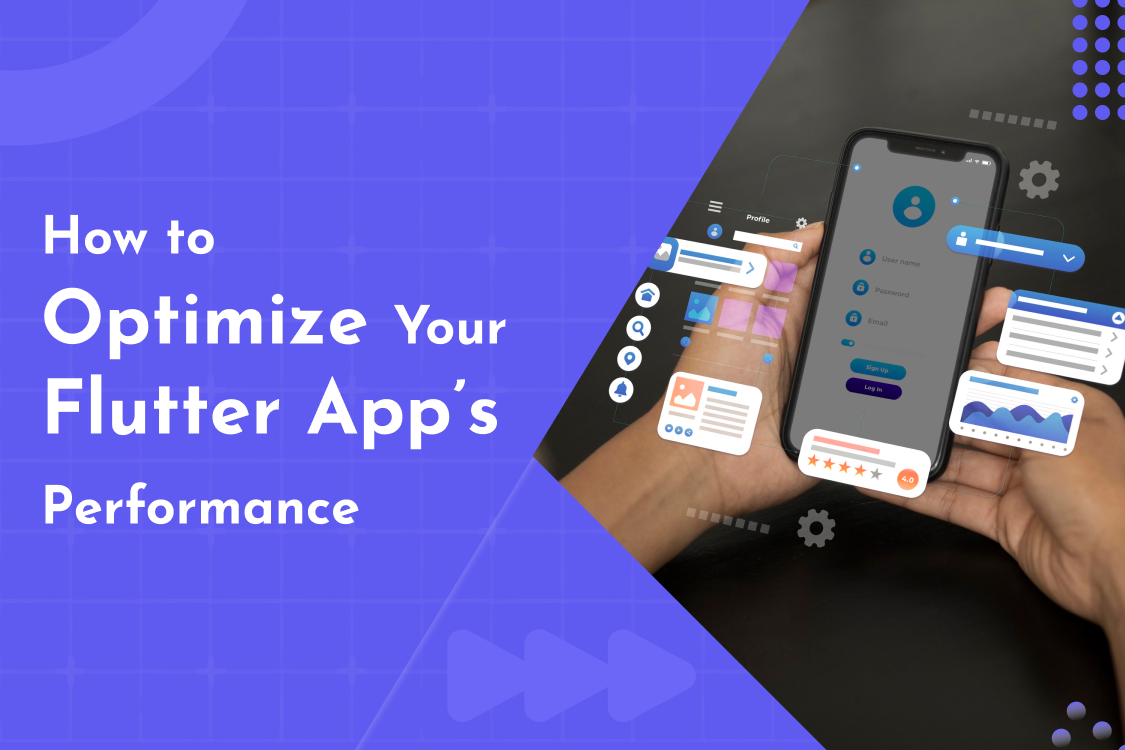Interested to work with our company? Let's get in touch!
We love to hear from you about your project.
We love to hear from you about your project.

Flutter is awesome for building beautiful, cross-platform mobile apps. But even the most eye-catching app won’t keep users around if it runs slow or crashes often. If you want smooth scrolling, fast load times, and happy users, you need to optimize your Flutter app’s performance
In this blog, we’ll break down what causes performance issues, how to fix them, and give you simple, real-world tips based on best practices from Miquido, UXCam, and Flutter’s official documentation.
Imagine opening an app and it takes forever to load, animations lag, or things just don’t respond when you tap. Not fun, right? Performance issues lead to:
Optimizing your Flutter app means more satisfied users and better business results.
Let’s start by understanding some common causes of poor performance:
Using setState() too much or rebuilding heavy widgets can slow things down.
Overusing the Opacity widget can cause your app to lag, especially on older devices.
Using a regular Column instead of ListView.builder for long lists will make scrolling choppy.
If you’re not monitoring FPS, memory usage, or frame build time, you might miss critical issues.
Let’s fix those issues with these actionable tips:
If a widget doesn’t need to change, make it stateless. It’s lighter and faster.
Use const constructors and tools like ValueListenableBuilder or ChangeNotifierProvider to keep your UI updates efficient.
Keep your build() method clean. Move any heavy logic out of it.
Always use ListView.builder for large lists to load items on-demand and save memory.
Instead of Opacity, try alternatives like using Visibility or combining opacity with images in design assets.
Use Flutter DevTools to monitor FPS, memory, and UI performance in real time.
Try to render each frame in less than 16 milliseconds to achieve 60 FPS.
Flutter gives you some great tools to debug and optimize performance:
Here’s a quick checklist for every Flutter developer:
Use effective state management (like Provider, Riverpod, Bloc)
Use Flutter DevTools. It shows you real-time stats on FPS, CPU, memory, and widget rendering.
Not necessarily. Flutter is built to handle many widgets efficiently. The problem starts when widgets rebuild unnecessarily or contain heavy operations.
No, but use them wisely. Stick to lightweight animations and avoid stacking too many at once.
Use ListView.builder. It loads only the items visible on screen, keeping things fast and light.
Optimizing your Flutter app’s performance doesn’t have to be complicated. With the right practices, tools, and a little care, you can build apps that run fast and feel great to use.
Need help with Flutter app optimization or want a professional team to do it for you? At Innoventix Solutions, we’ve got the experience and tools to make your Flutter app smooth, scalable, and ready to impress.
Note: Give us a call or leave a message, we endeavour to answer all enquiries within 24 hours on business days.
We love to hear from you about your project.
If you want to get a free consultation without any obligations, fill in the form below and we’ll get in touch with you.